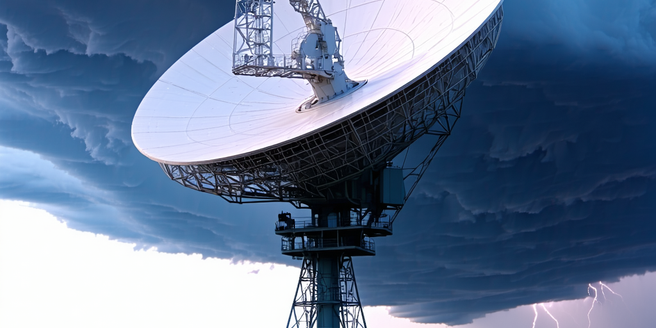
Understanding Weather Radar Systems
Weather radar systems are vital for precisely predicting atmospheric conditions. By emitting radio waves and analyzing the reflected signals, these systems can accurately track precipitation patterns. This information is crucial for industries reliant on atmospheric data, including construction, agriculture, and aviation. Understanding how these radar systems work is essential for integrating them into daily operations. They consist of components that transmit and receive signals, providing real-time data on rain, snow, or storms. The ability to forecast weather patterns allows industries to make informed decisions, enhancing scheduling efficiency and minimizing risks. Mastery of radar technologies empowers businesses to adapt to natural changes with precision.
The Impact of Weather on Construction
Weather significantly impacts construction projects, influencing timelines, safety, and costs. Rain, snow, and extreme temperatures can delay tasks, disrupt supply chains, and risk worker safety. Precise weather forecasting is crucial to mitigating these effects. By understanding weather patterns, construction managers can plan schedules more effectively, ensuring that projects remain on track. For instance, clear forecasts enable timely material delivery and workforce mobilization, minimizing idle time and resource wastage. Additionally, safety protocols are strengthened when weather predictions are accurately integrated into strategies. Thus, a comprehensive grasp of meteorological data is indispensable for thriving in the construction sector.
Benefits of Using Radar in Project Planning
Incorporating weather radar data into project planning offers profound benefits for construction endeavors. It strengthens decision-making by providing timely insights into weather conditions. This proactive approach enables project managers to optimize schedules, allocate resources efficiently, and safeguard worker safety by forecasting potential weather disruptions. With real-time data at their fingertips, teams can adjust on the fly to mitigate risks associated with unexpected weather changes. Leveraging radar data enhances adaptability, allowing for the seamless alteration of plans in response to changing weather conditions. Additionally, it reduces unplanned downtimes and associated costs, ensuring smoother operations. Emphasizing radar usage helps foster a resilient approach to handling natural elements, maximizing overall project success through informed risk management.
Integrating Technology in Construction Schedules
Integrating advanced technology such as weather radar systems into construction schedules is a game-changer for the industry. Employing these sophisticated tools allows for more precise and adaptable planning, ensuring that projects maintain momentum despite fluctuating conditions. As construction demands become more complex, the ability to adjust plans on the fly becomes increasingly crucial. Technological integration into scheduling includes data analytics, real-time monitoring, and automated reporting, which together enhance project efficiency and predictability. This forward-thinking approach enables construction teams to synchronize operations with environmental factors seamlessly, thus minimizing delays and optimizing workforce productivity. Embracing such innovations sets a precedent for smarter planning and operational excellence in construction projects.
Case Studies: Successful Radar Implementation
Case studies reveal the advantages of successful radar implementation in construction projects. One notable example is a large infrastructure project where radar data was integrated into the scheduling process. The project faced significant weather variability, yet by harnessing radar insights, managers were able to anticipate and mitigate weather-related disruptions efficiently. This proactive approach resulted in a considerable reduction in downtime and cost overruns, as well as enhanced safety protocols for the workforce. Such successes highlight the imperative of adopting radar technologies to optimize project timelines and improve overall execution. These cases underscore the strategic value and transformative impact of radar utilization.
Future Trends in Construction Weather Forecasting
Innovations in technology are continually reshaping weather forecasting in construction. Future trends point toward more sophisticated radar systems with enhanced precision, enabling even more accurate predictions. The integration of artificial intelligence and machine learning is set to revolutionize how data is interpreted and applied to project planning. These advancements will allow for the development of predictive models that provide insights into long-term weather patterns, revolutionizing strategic project planning. As technology evolves, the construction industry will benefit from even greater resilience against weather disruptions, enhancing efficiency and reducing risks. Constant innovation in weather radar systems heralds an exciting era for construction forecasting.
